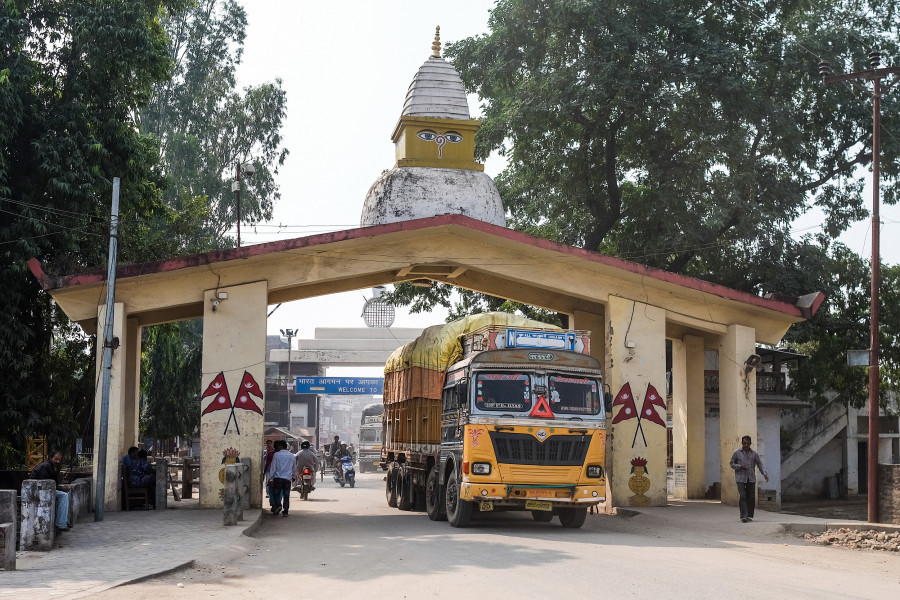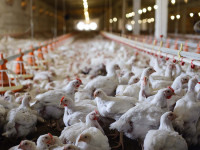Money
A limping economy crippled by external sector vulnerability
Nepal’s road to recovery is fraught with challenges due to falling remittances and rising imports. Experts stress the need for short-, mid- and long-term strategies.
Prithvi Man Shrestha
Cholendra Bahadur Karki, who runs a trekking agency, has been receiving inquiries from foreign tourists about trekking destinations including Annapurna and Everest routes.
“Around 30 groups have already confirmed their trekking plans with us in February, March and April next year,” Karki, managing director of Himalayan Joy Adventure Pvt Ltd, told the Post.
But the emergence of the Omicron coronavirus variant has prompted countries around the world to impose travel restrictions.
“After a long time, my company had been planning to organise trekking for many groups. It will be a huge setback for us if they are forced to cancel their travel plans due to the new variant,” said Karki, also the first vice-president of Trekking Agencies’ Association of Nepal.
In normal times, his company organised trekking for over 60 groups in the peak season—February to April.
After Covid-19 cases started to decline in Nepal, just as the government scaled up its vaccination drive, Nepal’s tourism sector, which makes a significant contribution to the country’s economy, was on the road to recovery, after it was wiped out by the pandemic for the last two years.
Nepal welcomed 23,284 foreign tourists by air in October, according to the Nepal Tourism Board. In November, 26,283 foreign tourists travelled to Nepal, the highest post-Covid arrivals.
In September, Nepal had resumed on-arrival visas for foreign tourists to revive the tourism sector devastated by Covid-19 related restrictions.
“Though the pace has been slow, we were expecting a gradual recovery. But the new variant has left us worried.”
The tourism sector is one of the major contributors to Nepal’s foreign currency reserves.
In the first quarter of the current fiscal year 2021-22, Nepal made an earning of just $35 million from the tourism sector, a sharp drop from $153 million in the first quarter of the fiscal year 2019-20 before the pandemic began.
Despite a substantial increase in the number of Nepali migrant workers going abroad during the first quarter of the current fiscal year, remittance shrank by 7.6 percent to Rs239.32 billion. In the first and second months too, the inflow of remittances fell by a steep 18.1 percent to Rs75.96 billion and by 6.3 percent to Rs155.37 billion.
As foreign exchange earnings from tourism and remittance have dropped, imports have soared, leading to outflow of foreign currency.
The gross foreign exchange reserves decreased by 6.5 percent to $10.98 billion in mid-October from $11.75 billion at the beginning of the current fiscal year, according to the Nepal Rastra Bank. The volume fell by 2.8 percent and 5.2 percent respectively in the first and second months of the current fiscal year.
The current foreign exchange reserves are enough for sustaining import of goods and services for 7.8 months, just above the minimum threshold of seven months set by the bank through the monetary policy for the current fiscal year. So the balance of payment (balance between inflow and outflow of money) has also turned negative by Rs76.14 billion, according to the central bank.
During the first four months of the current fiscal year, Nepal’s imports increased by 61.6 percent to Rs650.29 billion. Even though exports also grew by 104.3 percent to Rs82.12 billion, it is insignificant compared to imports, according to the Trade and Export Promotion Centre.
A significant chunk of bank credits has also gone for import purposes, leading to shortages of liquidity to finance economic activities to support the economy devastated by the Covid-19, according to the central bank.
“At a time when there has been a growing demand for credit for recovery, a significant share of the bank credits have gone for making payment for imported goods,” Nepal Rastra Bank stated in its quarterly review of the monetary policy 2021-22.
The central bank said that amid increasing credit for imports, remittances also dropped creating challenges to external sector stability.
The external sector of the economy covers sectors including export and import, remittance, foreign direct investment and foreign aid.
“Thus the problems arising in the external sector are also creating trouble for the domestic sector of the economy,” Keshav Acharya, a senior economist.
Decreasing inflows of remittance have had an impact on deposits also. According to the central bank, deposits increased by just Rs56 billion in the first quarter of the current fiscal year, as lending surged by Rs286.56 billion, creating a shortage of loanable funds.
Most of the banks and financial institutions at present have either halted lending or are providing loans in a selective way based on the availability of funds.
“Banks’ failure to provide loans will have a detrimental effect on the economic growth prospect as economic activities slow down when there is not enough cash in the market,” said Acharya.
The government aims to achieve an economic growth of seven percent in the current fiscal year.
One way the economy can remain vibrant is when the government spends its capital budget, but signs are not encouraging on this front also.
“With the government failing to spend the capital budget, it has not been able to claim reimbursement from donors and inflows of foreign exchanges in the form of foreign aid have also slowed down,” said Acharya.

As of Friday, the government’s capital spending stood at just 5.57 percent of the total allocated capital budget, according to the Financial Comptroller General Office, a government agency responsible for keeping account of the income and expenditures of the government. The government has allocated Rs439.65 billion as capital budget for this fiscal year.
Acharya said that the economy has fallen victim to the government’s inefficiency in spending the development budget and a worsening external sector of the economy.
Experts say some of the government and central bank’s policies have also been detrimental to the country’s foriegn exchange reserves.
“The central bank’s policy of controlling interest rates has contributed to capital flights,” said Prashant Raj Pandey, an economist. Last month, the central bank sought to control interest rates by making a provision that the banks and financial institutions could not increase interest on deposits by more than 10 percent of the previous month.
“There has been a long practice of depositing money in Indian banks and the policy of controlling the interest rates here on deposits will lead to capital flights. When our foreign exchange earnings are depleting, adopting such a policy could lead to outflow of money,” said Pandey, who is associated with VRock and Company, a management consultancy firm that works in the areas of infrastructure and financial sector.
According to experts, the government needs to adopt urgent-, medium- and long-term strategies to address the vulnerability that the external sector of the economy is facing.
“Considering the vulnerability of over-reliance on remittances, we need to take import substitution measures and tourism promotion,” said Govinda Pokharel, former vice-chair of the National Planning Commission. “There is a need to strike a fine balance. Controlling imports can affect revenue collection. Nearly half of the government’s revenue comes from imports.”
But the more the imports, the more the outflow of foreign currency.
One of the long-term strategies Nepal needs to adopt, according to experts, is reducing the country’s over-dependence on remittances. Such a policy has been increasingly important because host countries of Nepali migrant workers have started employing local people.
“Currently, we are heavily reliant on remittances for foreign exchange earnings,” said Acharya, the economist. “Warning signs are already there and we have to develop alternative sources of foreign exchange earnings to enable us to continue to buy essential foreign goods and services.”




 7.12°C Kathmandu
7.12°C Kathmandu













%20(1).jpg&w=300&height=200)
